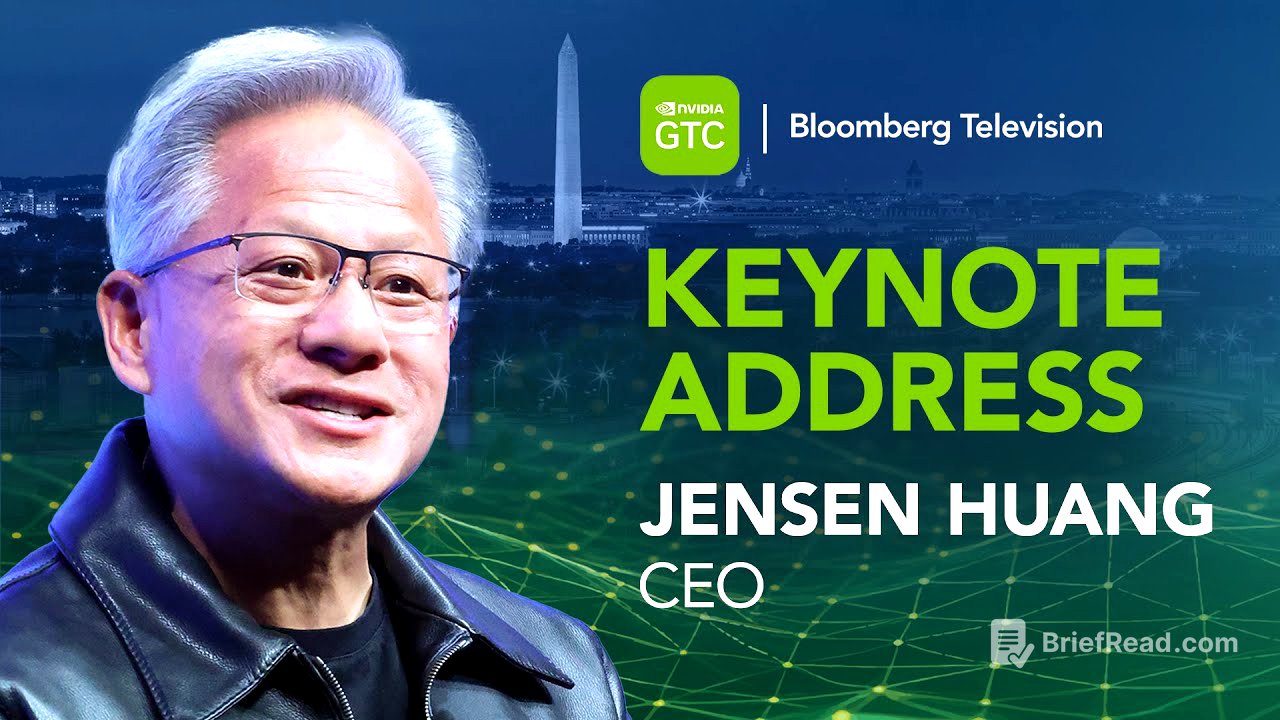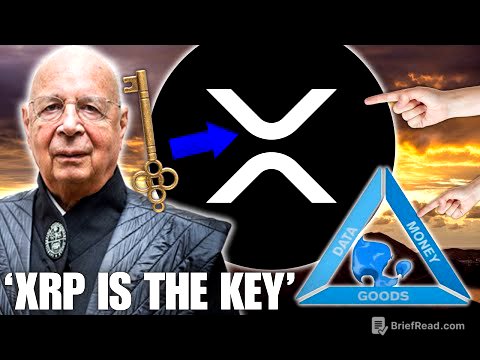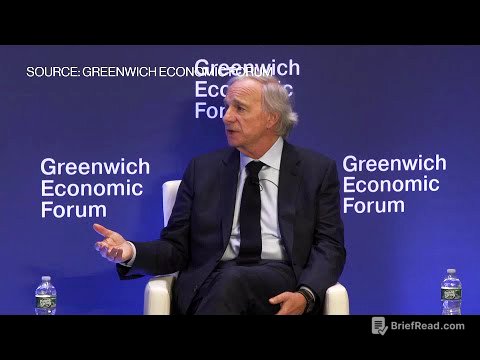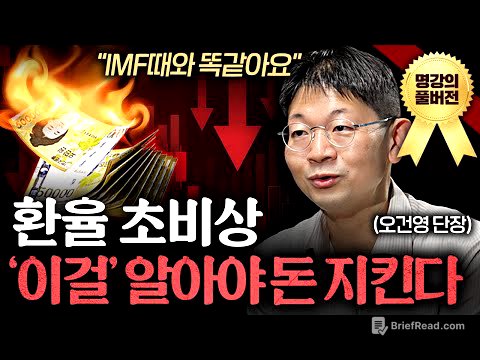TLDR;
Jensen Huang's keynote speech at GTC 2024 highlights Nvidia's advancements in accelerated computing and AI, focusing on new partnerships, technologies, and platforms designed to drive innovation across various industries. Key announcements include the Nvidia Arc for 6G telecommunications, the NVQ-Link for quantum computing, and the Omniverse DSX for AI factory design. Huang emphasises the importance of American leadership in technology and manufacturing, showcasing Nvidia's role in reindustrialising the US and powering the next wave of AI-driven advancements.
- Nvidia is partnering with Nokia to bring 6G telecommunications to America.
- NVQ-Link connects quantum computers directly to GPU supercomputers for error correction and AI calibration.
- Nvidia is building seven new AI supercomputers in partnership with the Department of Energy.
Introduction and Nvidia's Computing Model [1:31]
Jensen Huang welcomes the audience to GTC, emphasising the event's focus on industry, science, and the future of computing. He thanks Nvidia's partners and acknowledges the event as the "Super Bowl of AI". Huang reflects on Nvidia's invention of a new computing model, highlighting the challenges of solving problems that general-purpose computers cannot. He notes that Moore's Law is slowing down due to the limitations of physics, making accelerated computing essential.
CUDA and its Libraries [4:59]
Huang discusses the importance of CUDA, Nvidia's parallel computing platform and programming model, which has been developed over 30 years. He explains that CUDA is crucial for enabling developers to target Nvidia's computing platform and utilise its architecture fully. He showcases various CUDA X libraries, such as KU Litho for computational lithography, sparse solvers for CAE applications, and Monai for medical imaging AI, emphasising their role in opening new markets and advancing accelerated computing.
Nvidia Arc and 6G Telecommunications [12:14]
Huang addresses the need for America to regain its leadership in wireless technology, announcing a partnership with Nokia to develop 6G technology based on accelerated computing and AI. Nvidia introduces Nvidia Arc, a new product line featuring the Gray CPU, Blackwell GPU, and ConnectX Melanox networking. Nvidia Arc aims to create a software-defined, programmable computer capable of wireless communication and AI processing. This technology will enable the upgrade of millions of base stations worldwide with 6G and AI, improving spectral efficiency and enabling AI on RAN for edge industrial robotics.
Quantum Computing and NVQ-Link [18:23]
Huang discusses the progress in quantum computing, highlighting the recent breakthrough in creating a stable and error-corrected logical cubit. He emphasises the importance of connecting quantum computers directly to GPU supercomputers for error correction, AI calibration, and simulations. Nvidia introduces NVQ-Link, a new interconnect architecture that facilitates high-speed data transfer between quantum processors and Nvidia GPUs. This technology, combined with CUDA-Q, enables researchers to orchestrate quantum devices and AI supercomputers for quantum GPU applications.
Partnership with the Department of Energy [25:27]
Huang announces a partnership with the Department of Energy (DOE) to build seven new AI supercomputers aimed at advancing the nation's scientific capabilities. He credits Secretary Chris Wright for his energy and passion in ensuring America's leadership in science. Huang notes that computing is the fundamental instrument of science and that these supercomputers will leverage accelerated computing, AI, and quantum computing to enhance scientific research.
The Reinvention of the Computing Stack by AI [27:21]
Huang describes AI as more than just a chatbot, explaining that it has reinvented the computing stack. He contrasts traditional hand-coded software running on CPUs with machine learning trained by AI running on GPUs. He highlights the importance of energy and infrastructure in supporting AI development, thanking President Trump for his pro-energy initiatives. Huang explains how AI tokenises various forms of data, enabling it to learn, translate, and generate content.
AI as Work and the Rise of AI Factories [33:02]
Huang distinguishes AI as "work" rather than a "tool," emphasising its ability to perform tasks and augment human productivity. He cites examples such as Perplexity and Cursor as AI systems that use tools to accomplish tasks. Huang introduces the concept of an AI factory, a specialised computing system designed to produce valuable tokens at incredible rates. These factories, unlike traditional data centres, are dedicated to running AI and require mountains of chips.
The AI Industry Turning Point and Co-Design [38:42]
Huang notes that the AI industry has reached a turning point, with AI models now smart enough to be worth paying for. He attributes this to advancements in pre-training, post-training, and thinking capabilities. The increased demand for computation, combined with the end of Moore's Law, necessitates co-design, where chips, systems, software, and applications are rearchitected from the ground up. This approach allows Nvidia to achieve significant performance improvements and drive down costs.
Grace Blackwell and Extreme Co-Design [48:59]
Huang introduces Grace Blackwell, highlighting its extreme co-design and ten-fold performance increase over previous generations. He explains that Grace Blackwell generates the lowest cost tokens due to its exceptional token generation capability. Huang also discusses the significant capital expenditure (capex) investments by cloud service providers (CSPs) in AI infrastructure, noting that Nvidia's architecture delivers the best total cost of ownership (TCO).
Manufacturing in America and Vera Rubin [1:03:35]
Huang celebrates the return of manufacturing to America, showcasing Nvidia's full production of Blackwell in Arizona. He introduces Vera Rubin, Nvidia's third-generation MVLink 72 rack-scale computer, highlighting its cableless design and 100 petaflops of performance. Huang explains that Nvidia is now designing entire AI factories and has created a technology called Omniverse DSX to enable partners to integrate into this factory digitally.
Omniverse DSX and AI Factory Design [1:11:50]
Huang introduces Nvidia Omniverse DSX, a blueprint for building and operating gigascale AI factories. He explains that DSX allows for the co-design of building, power, and cooling with Nvidia's AI infrastructure stack. The digital twin acts as an operating system, enabling engineers to optimise power consumption and reduce strain on the AI factory and the grid.
Open Source Models and AI Startups [1:15:54]
Huang emphasises the importance of open-source models, noting their increased capabilities and efficiency. He states that open-source models are the lifeblood of startups and are essential for researchers, developers, and companies worldwide. Nvidia is dedicated to leading in open-source contributions, with numerous models in leaderboards across various domains. Huang also highlights the success of AI startups building on Nvidia's platform, citing the rich ecosystem, versatile tools, and widespread availability of Nvidia GPUs.
Enterprise Partnerships: Crowdstrike and Palantir [1:20:07]
Huang announces partnerships with Crowdstrike and Palantir to supercharge cybersecurity and data processing, respectively. The partnership with Crowdstrike aims to create cybersecurity AI agents that operate at the speed of light, while the collaboration with Palantir focuses on accelerating data processing for government, national security, and enterprises.
Physical AI and Robotic Factories [1:23:18]
Huang explains that physical AI requires three computers: one for training, one for simulation (Omniverse), and one for operation (robotics). He showcases Nvidia's partnerships with Foxconn and other companies to create robotic factories, emphasising the importance of digital twins in planning, designing, and operating these factories. Huang also highlights advancements in humanoid robots and the potential for a large consumer electronics market.
Robo Taxis and Uber Partnership [1:32:42]
Huang discusses the inflection point in robo taxis, highlighting Nvidia's Drive Hyperion platform designed for autonomous vehicles. He announces a partnership with Uber to connect Nvidia Drive Hyperion cars into a global network, envisioning a future where robo taxis are widely available.
Conclusion and Key Platform Transitions [1:36:08]
Huang concludes by summarising the key topics covered, emphasising the two platform transitions driving Nvidia's growth: from general-purpose computing to accelerated computing, and from classical software to artificial intelligence. He highlights Nvidia's new platforms for 6G (Arc), robotics (Hyperion), and factories (DSX and Mega), reiterating the company's commitment to manufacturing in America and making America great again.









